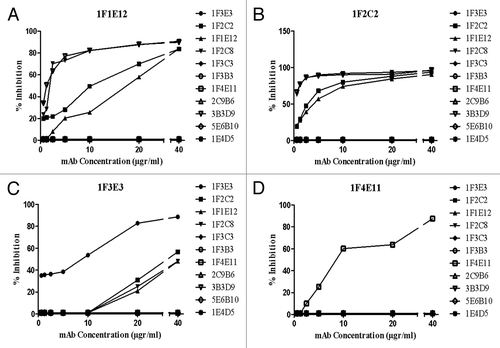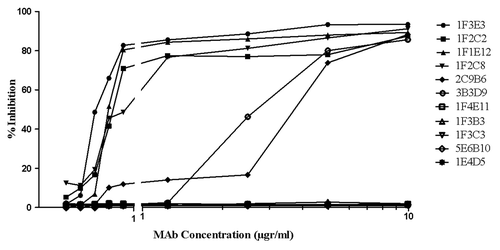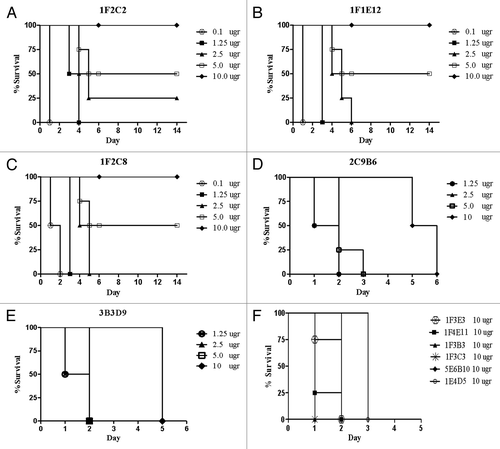Figures & data
Table 1. Determination of isotype and specificity of tetanus toxin specific monoclonal antibodies
Figure 1. Representative cross-inhibition profile of TeNT-specific monoclonal antibody binding to tetanus toxin. Increasing concentrations of the competitor mAbs were used to inhibit binding of the enzyme conjugated detector mAbs (1F1E2, 1F2C2, 1F3E3, and 1F4E11) to tetanus toxin. The results show percent inhibition of the binding of detector mAb to tetanus toxin.

Figure 2. Inhibition of binding of tetanus toxin to ganglioside GT1b by the monoclonal antibodies. An appropriate concentration (20 µg /ml) of tetanus toxin in the presence or absence of increasing concentrations of mAbs was allowed to bind to ganglioside GT1b. Percent inhibition of TeNT binding was calculated by dividing of average OD of each concentration of neutralizing mAbs by the average OD of toxin alone.

Figure 3. Tetanus toxin inhibitory effect of monoclonal antibodies in vivo. BALB/c mice were injected with a constant amount of toxin (10 MLD) mixed with different concentrations of six mAbs (A–F).

Figure 4. Neutralizing activity of two combinations of monoclonal antibodies (A and B). Equal concentrations of two mAbs were mixed and incubated with 10 MLD of tetanus toxin before injection into mice.

Figure 5. Protective capacity of standard human polyclonal anti tetanus immunoglobulin (TIG) in BALB/c mice. Different concentrations of TIG were mixed with 10 MLD of TeNT and injected intraperitoneally.

